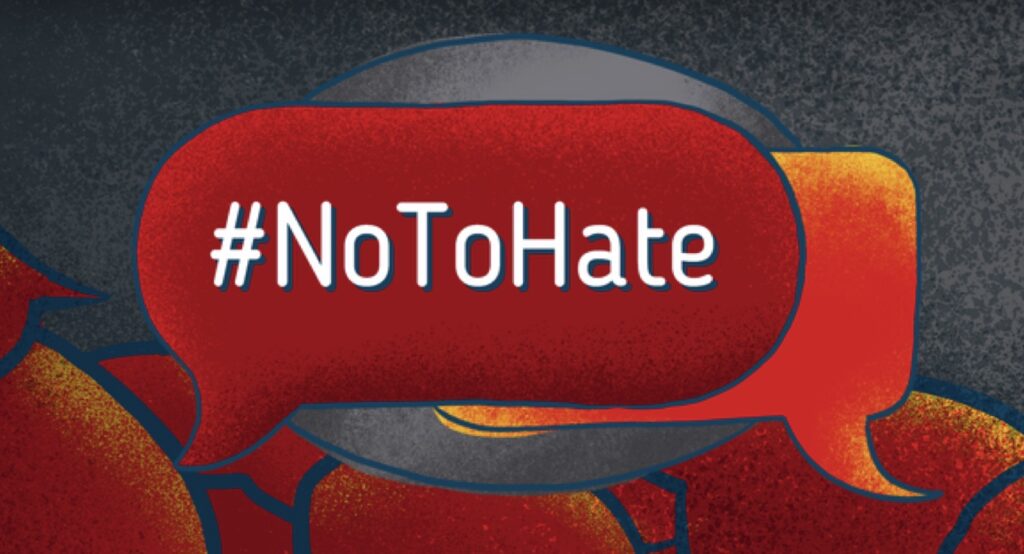
The ‘Speaking Back: Countering Hate Speech Through Regional Research and Solidarity’ webinar, organised by the Digital Accountability Collective South Asia (DACSA), focused on how big tech platforms favour hate speech, leading to real world negative impacts for minorities and marginalised communities in South Asia. The session, held on the International Day for Countering Hate Speech (18th of June), highlighted the amplification of hate speech in India, Pakistan, Bangladesh, and Sri Lanka, and its adverse impacts on marginalised communities.
Pakistan’s Digital Rights Foundation, Bangladesh’s Digitally Right, and Sri Lanka’s Hashtag Generation presented case studies from recent incidents in each country, emphasising the role of anonymisation and ‘opaque algorithms’ of big tech platforms in spreading misinformation. The discussion also underscored the need for collective action and accountability among tech platforms, states, and civil society to address these issues effectively.
Indo-Pak conflict in 2025
The Digital Rights Foundation’s report on hate speech during the Indo-Pak conflict in mid 2025 revealed a surge in gendered disinformation and hate speech, particularly targeting women and gender minorities. As the escalations on the ground intensified, social media platforms became battlegrounds where users from both sides of the border flooded them with unverified and fake news, nationalist propaganda, and competing truth claims.
This spread of malicious information and hate speech online contributed to an intense and fast moving information war – one that was “almost impossible” to keep up with for researchers and monitors.
Public narratives were also restricted via censorship within both countries, which was at an all time high, with content from both sides of the border being restricted by both India and Pakistan respectively.
Key content categories included rape threats, sexual violence narratives, and AI-generated misinformation. Women were objectified as war trophies and vilified when expressing dissent. Women relatives of public officials were doxxed and harassed online, despite not being involved in the conflict in an official capacity at all. As rape culture and the objectification of women were linked to war victory and nationalism, the most recent Indo-Pak conflict showed how old forms of violence against women during wartime take new, terrifying shapes online.
The conflict revealed how hate speech online, especially gendered and targeted against minorities, fuels real world consequences and harm. Thus, the Digital Rights Foundation called on both tech platforms and states to act with urgency and accountability as silence enables violence.
Rohingya refugees in Bangladesh
Nearly one million Rohingya refugees are currently living in Bangladesh, in the world’s largest in Cox’s Bazaar. However, online platforms mostly demonstrate adversary trends against them. In general, they’re portrayed negatively with the use of slurs or ridicule to dehumanise them. Secondly, an ‘us versus them’ narrative is created, further ostracising the Rohingya refugees from society. Finally, posts attempt to trigger an emotional response from locals about the Rohingyas – usually negative. For example, some posts claim that locals are being deprived because of the refugees.
Fearmongering about the Rohingya refugees also claim that they’re “infiltrating” the country, are able to sway democratic notions within the country, are responsible for the spread of diseases, and are engaging in sex work. Alarmingly, most online posts encourage violence against the refugees.
Re-victimisation of children online
In Sri Lanka, Hashtag Generation is observing a trend where victims of child abuse are often re-victimised in the digital space. If the victim is a girl child especially, slang terms would be utilised online to target her, and place the responsibility of the incident on her.
This behaviour corresponds with the behaviour of mainstream media, which portrays the news in ways that are harmful to children as well.
Online hate against persons with disabilities
Sri Lanka, for the first time in its 77 years of political independence, a person with a disability became a Member of Parliament last year. However, online narratives targeted this MP, along with other persons with disabilities.
Offline, inclusive policies and attitudes in Sri Lanka are scarce which means that digital inclusion also remains poor.
When monitoring such harms against persons with disabilities online, Hashtag was also able to observe the thin line between harmful speech and freedom of expression.
These recent incidents across South Asia reveal how offline realities take harmful shapes of violence online and how online violence translates to offline impacts. Ultimately, marginalised communities have to battle harmful speech and violence both online and offline.
Image sourced from here